Plumbing Notes: It's Not QE
the mechanics behind the Fed's coming balance sheet "bazooka"
Money Market Commentary
The Fed’s plumbing put awaits, with the U.S. central bank set to expand its balance sheet once again. Even so, monetary leaders initiating RMOs (reserve management operations) will likely unleash more flawed takes on “liquidity” than stimulate financial markets, let alone the real economy. What the Fed is about to unleash isn’t QE (quantitative easing), stealth QE, or even stealth easing. These involve the Fed swapping reserves for safe assets (USTs), absorbing duration risk in the hope that the private sector liquidates its most risky assets and spends into the real economy. This time around, monetary leaders will merely boost reserves to offset forces outside balance sheet runoff (i.e. QT) that will eat away at banks’ reserve balances and potentially (but unlikely) induce “repocalypse” 2.0.
“RMOs” (reserve management operations) better describe what the Fed is about to undertake, namely boosting banks’ reserve levels, which will continue to wane, even with QT no longer in effect from December 1st. Despite the Fed’s balance sheet runoff ceasing, interbank liquidity will slowly wither away by either temporary or “permanent” means. Reserves can be temporarily removed (i.e. neutralized) from the banking system via an increase in overnight (o/n) Fed RRPs, or from foreign central banks investing their overnight dollar liquidity in the Fed’s FRP (foreign repo pool).
“Permanent” losses, meanwhile, stem from the U.S. government printing currency, which eliminates reserves, as banks — meeting customer demand for cash — pay the Fed with reserve balances in their Fed accounts (↑CURRENCY, ↓RESERVES). The U.S. central bank swaps currency for reserves on its balance sheet, then sends an armored truck full of physical U.S. dollars to the bank that’s short on currency. At the same time, banks’ reserve demand increases as their assets expand. Banks don’t need reserves but capital to expand their balance sheet and make loans. Yet, they do need reserves (a.k.a. settlement balances) to settle payments with other banks if more customers spend after borrowing. Thus, to offset rising currency and bank assets, the Fed’s “war chest” must expand — it’s not an if but when.
Even after a violent October month-end, however, the Fed is in no immediate rush to end QT and up interbank liquidity. Reserves, according to Conks’ estimate, are still $100 billion or so above reserve scarcity, without assuming the Fed’s upper jaw (the SRF — standing repo facility) serves as an additional cushion. As expected, the Fed only decided to end QT in December, without an immediate halt or any OMOs (open market operations). Sooner or later, though, that $100 billion will be “consumed”, either slowly from currency and bank demand or unexpectedly via sharp interbank flows into the TGA. The Fed must now select an ample dose of reserves to inject into the banking system to offset “casual” drain. Conks believes this will amount to around $20-$30 billion monthly.
So if you’re hoping for the next leg up in risk assets to be fueled by another Fed QE program, look elsewhere! Slight changes in interbank liquidity don’t prevent or encourage passive flows from bidding up risk assets or hedge funds from entering long positions via their prime broker. Funding markets merely set the price of entry. Instead, changes in interbank liquidity (i.e., reserve balances) meaningfully affect short-term interest rates (STIRs) and funding markets as opposed to risk assets — and judging by correlations, that’s being generous.
A TGA drawdown (↓TGA, ↑RESERVES) being positive for, or having any genuine impact on, risk assets is just plain wrong. There’s no correlation or causation. Reserve levels should only concern those that engage in “niche” STIR trades, such as trading the SOFR-FF basis (i.e. the difference between SOFR and o/n FF) or cross-currency (XCCY) bases. Right now, the “reserve flood” from the TGA has reached its full power. Still, November will likely see more TGA cash released than in December. The shutdown could end sooner than later, a semi-significant cause of the TGA buildup, at most about $30 billion, but a fraction of the hundreds of billions of inflows prompted by the Treasury funding its mandatory cash cushion, which it completed by October month-end. Nonetheless, Conks believes there’s more juice in the Nov long SOFR-FF (SERFF) — at a push, as narrow as 8bps.
Ultimately, there’s a lot more time for the Fed to do nothing. We’re still above the system’s lowest comfortable level of reserves (LCLoR), and balance sheet runoff is set to conclude shortly. Regardless, with the Fed unable to ditch more “unnecessary duration” via QT and interbank liquidity still draining, monetary leaders no longer benefit from balance-sheet austerity. RMOs should thus commence by the end of this year, with a stormy year-end and The Great Rebalancing in full swing.
More Plumbing Notes
From the Conks feed (chat): signals from private credit & “equity repo”, peak basis trade (?), and the TGA drawdown visualized.
In today’s Pro: the mechanics (math) behind why RMOs are coming, associated balance sheets (via graphics), intel on how the Fed reacted to a volatile October month-end, and clues to where officials think LCLoR lies.
Chartbook (November 10th 2025)
If you act on anything provided in this newsletter, you agree to the terms in this disclaimer. Everything in this newsletter is for educational and entertainment purposes only and NOT investment advice. Nothing in this newsletter is an offer to sell or to buy any security. The author is not responsible for any financial loss you may incur by acting on any information provided in this newsletter. Before making any investment decisions, talk to a financial advisor.
EFFR, OBFR, SOFR, TGCR, and BGCR are subject to the Terms of Use posted at newyorkfed.org. The New York Fed is not responsible for publication of tri-party data from the Bank of New York Mellon (BNYM) or GCF Repo/Delivery-versus-Payment (DVP) repo data via DTCC Solutions LLC (“Solutions”), an affiliate of The Depository Trust & Clearing Corporation, & OFR, does not sanction or endorse any particular republication, and has no liability for your use.




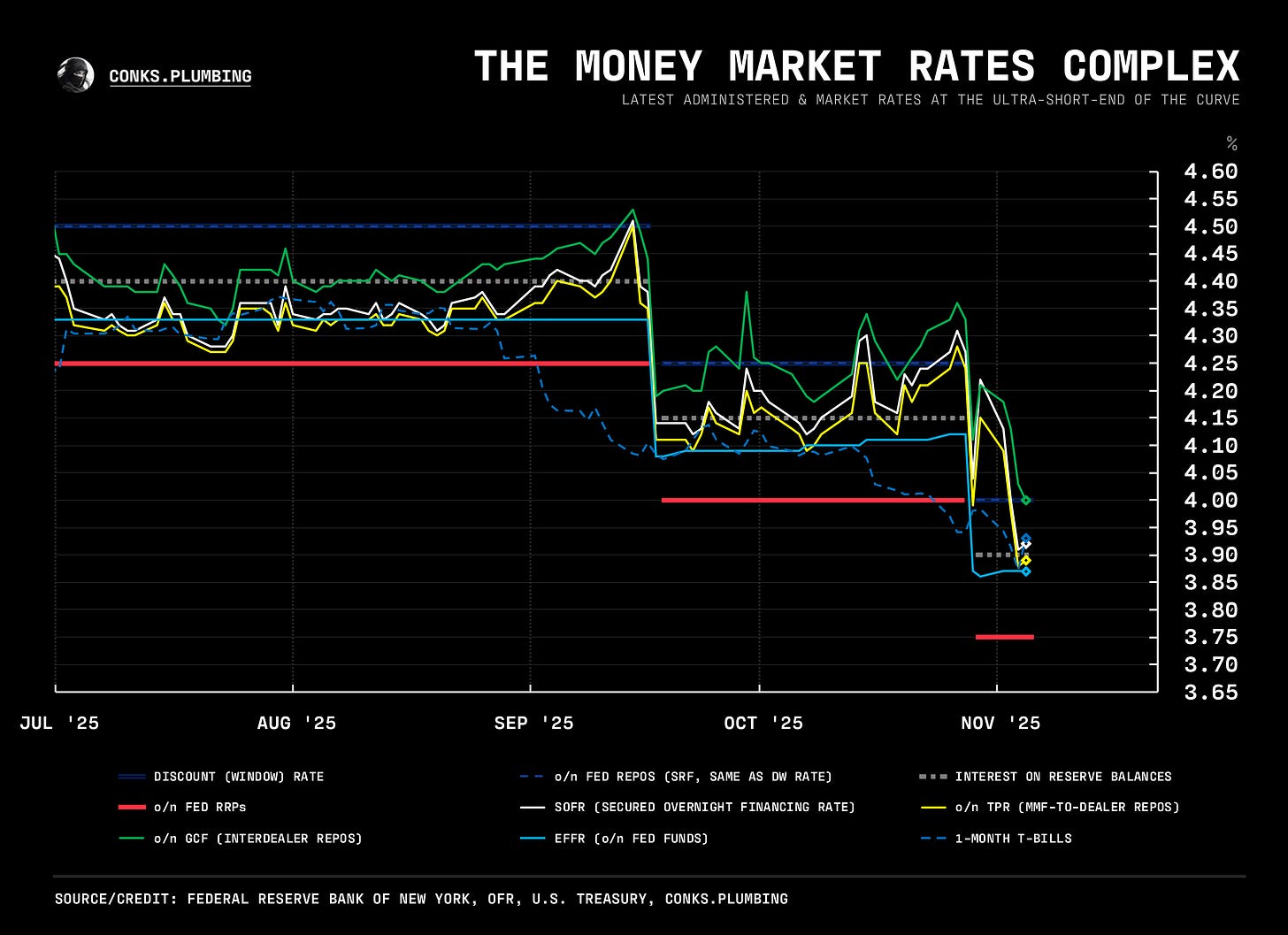
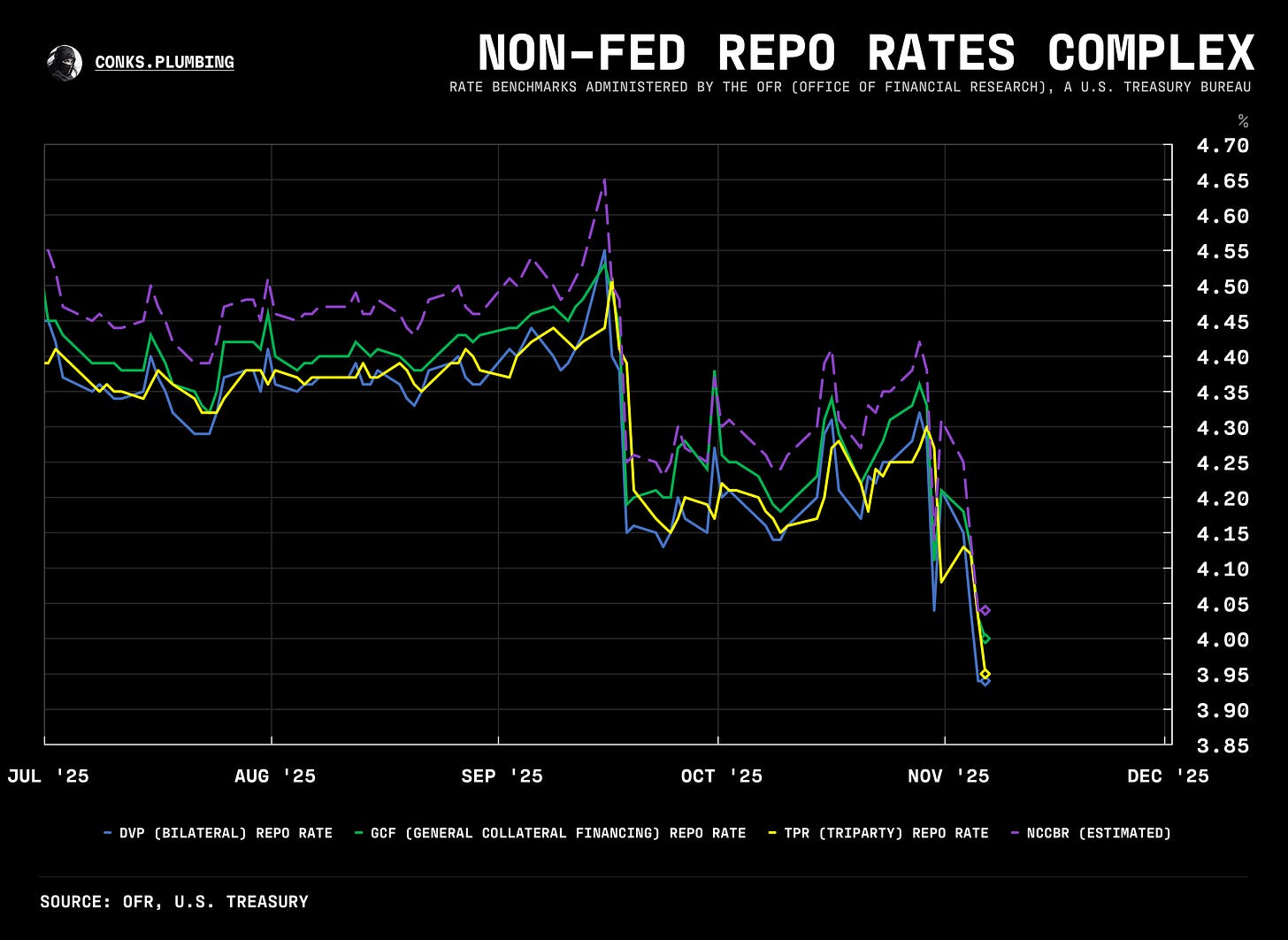
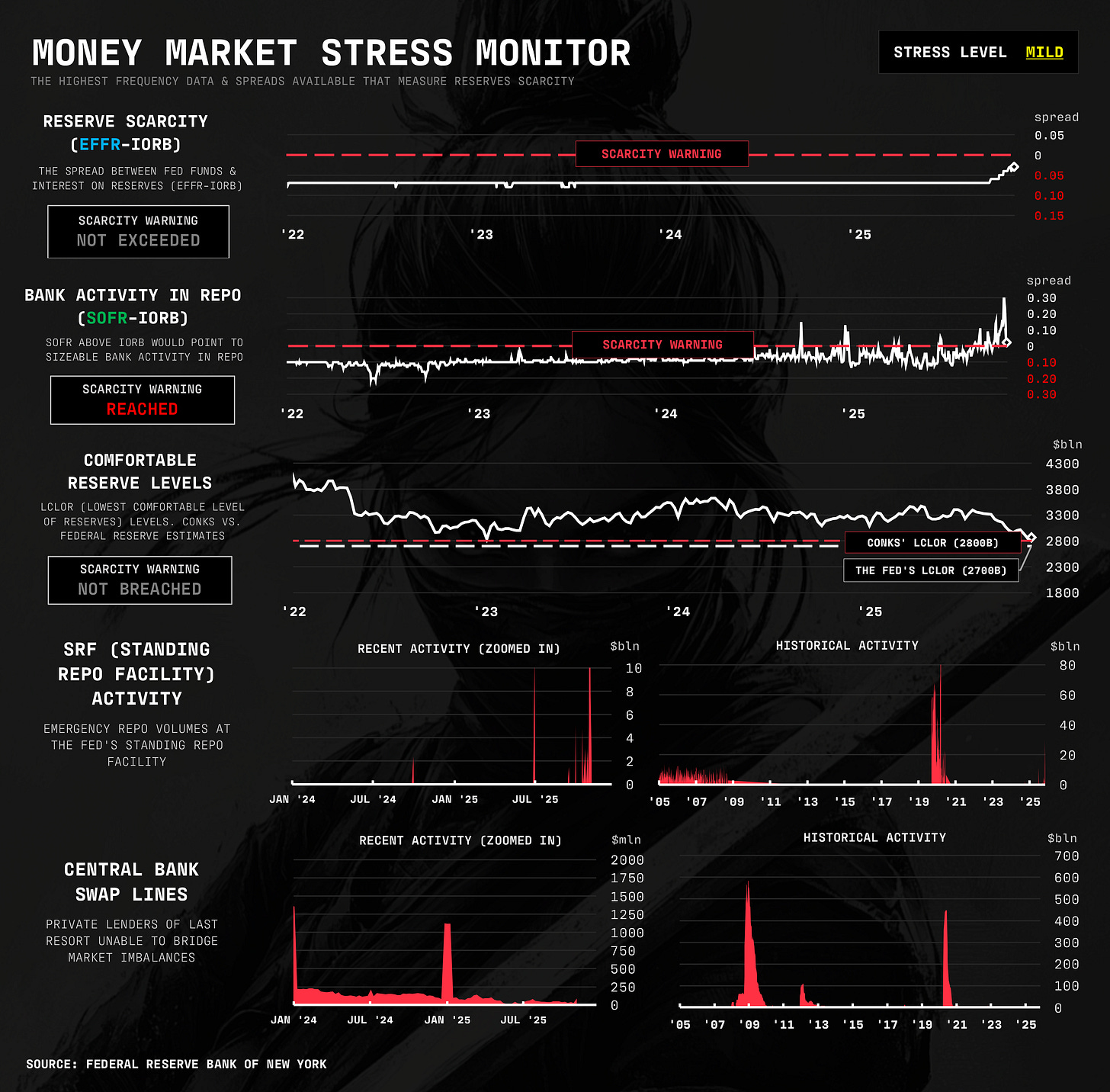



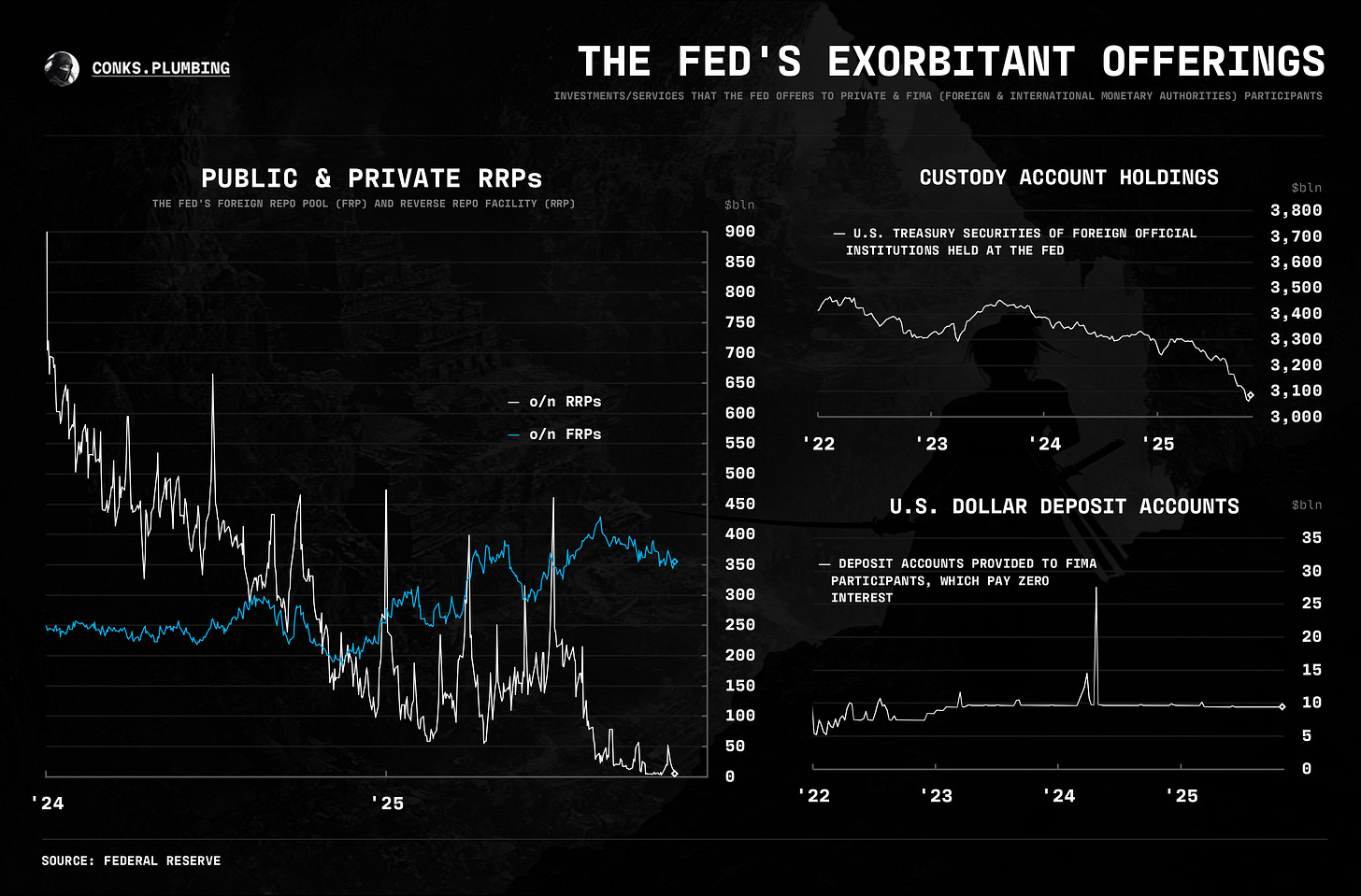
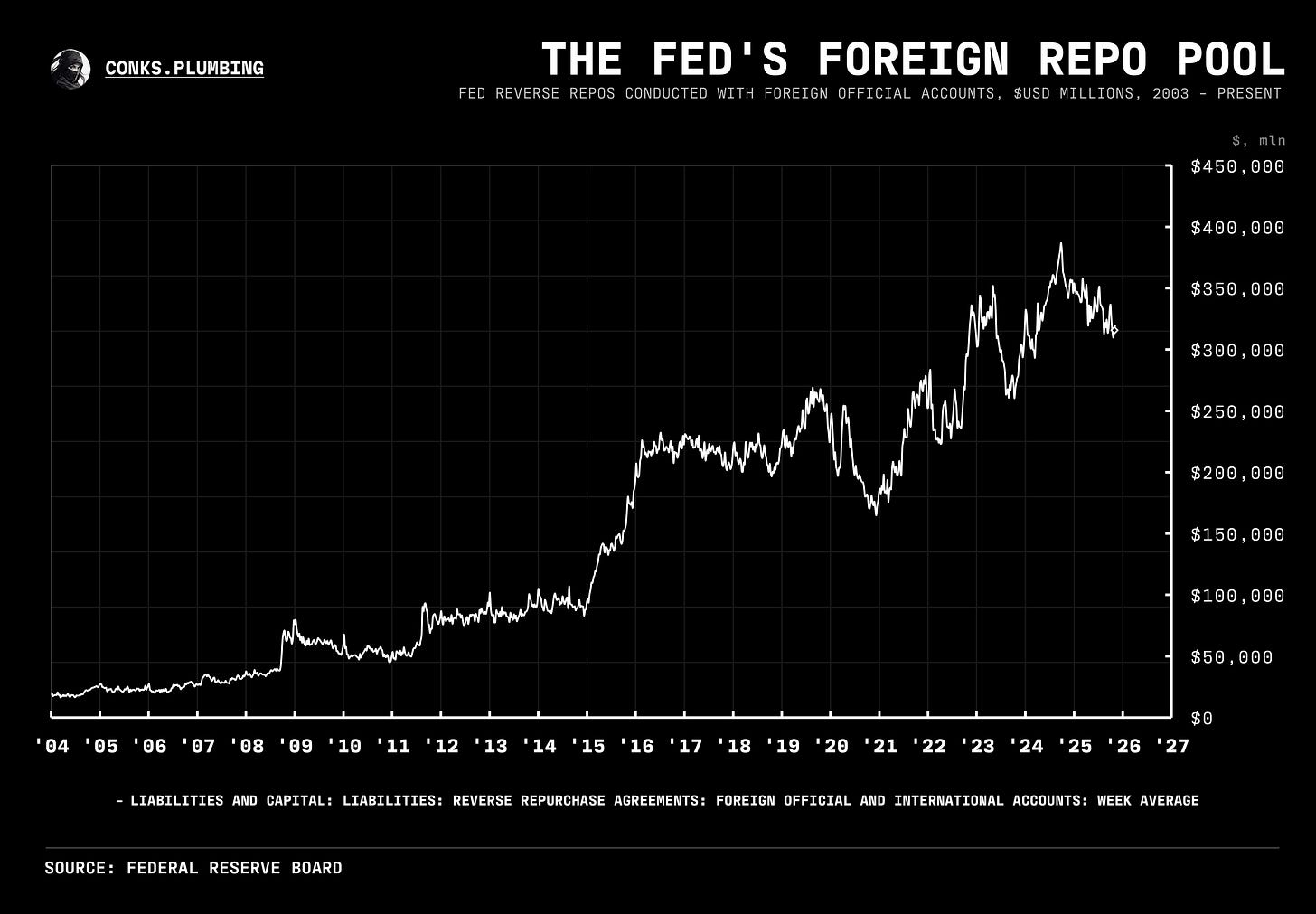
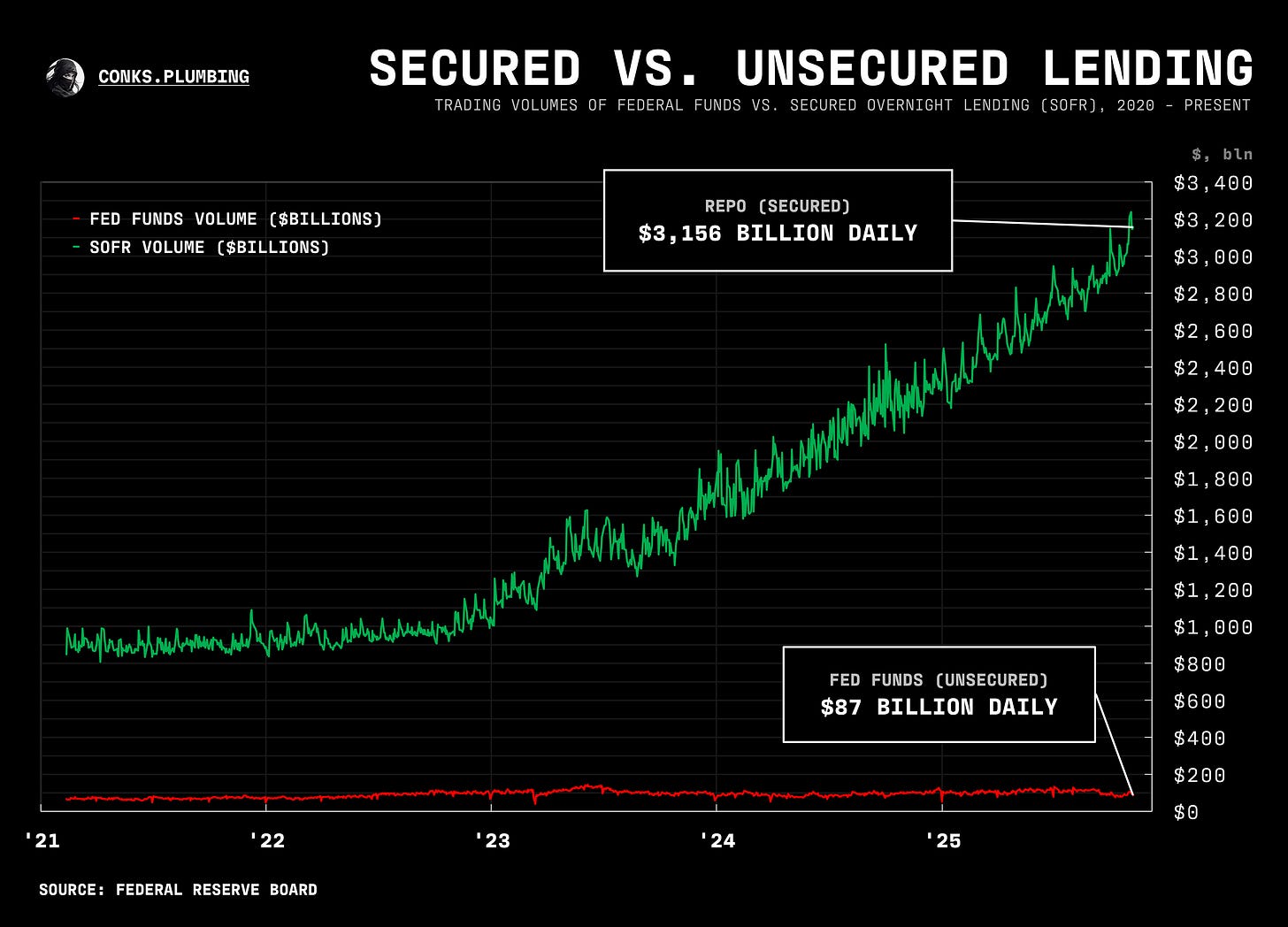

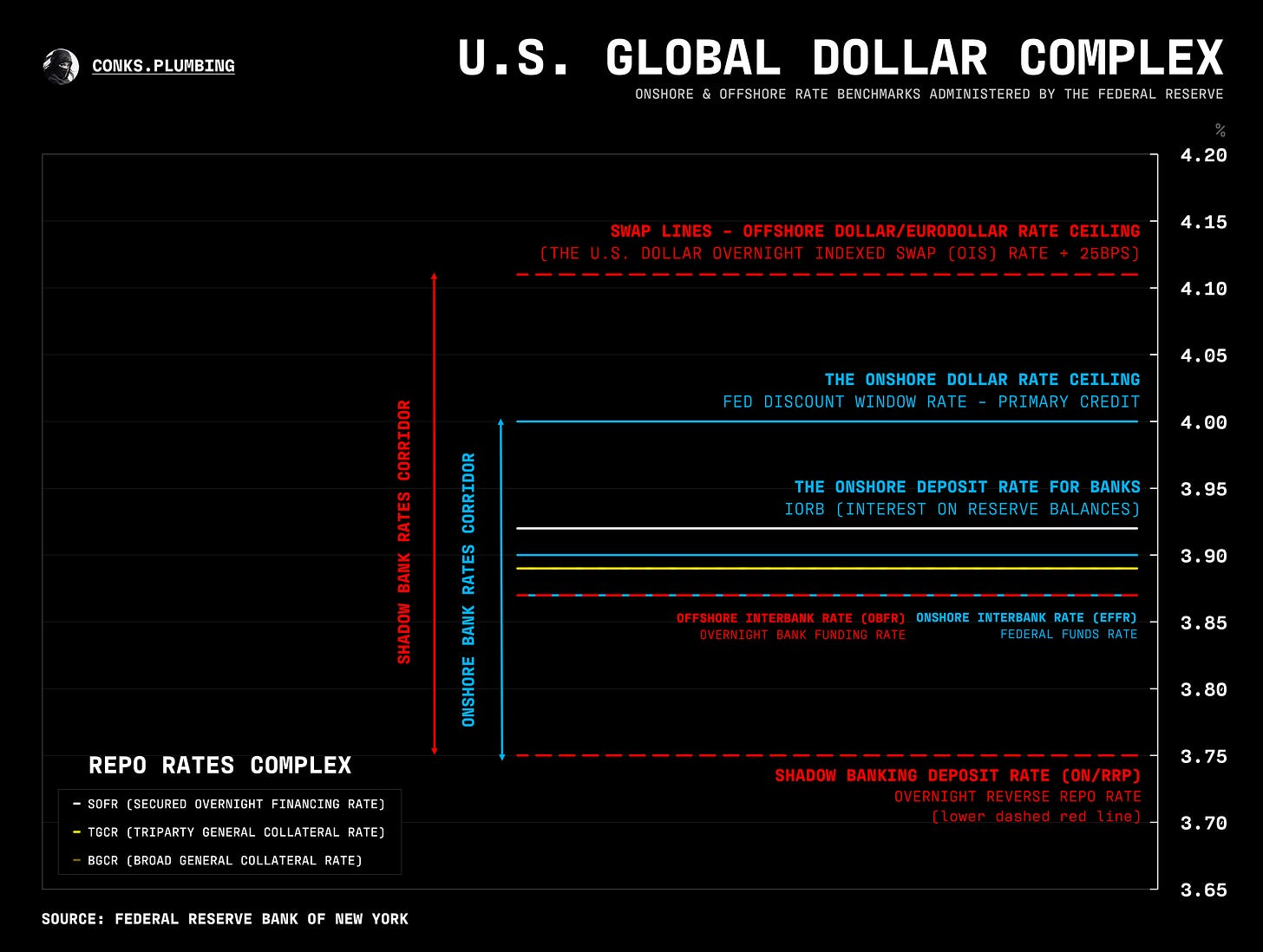
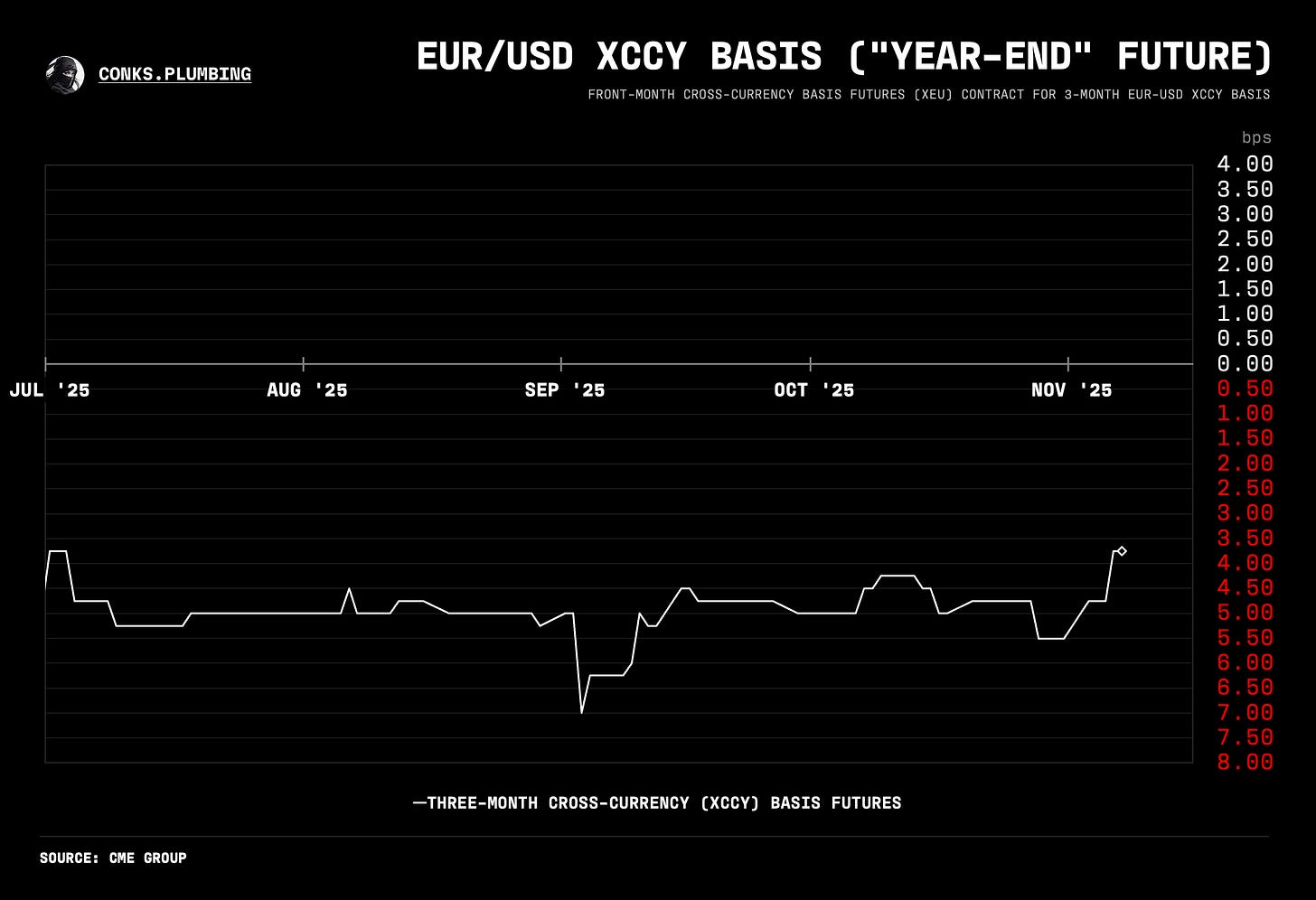


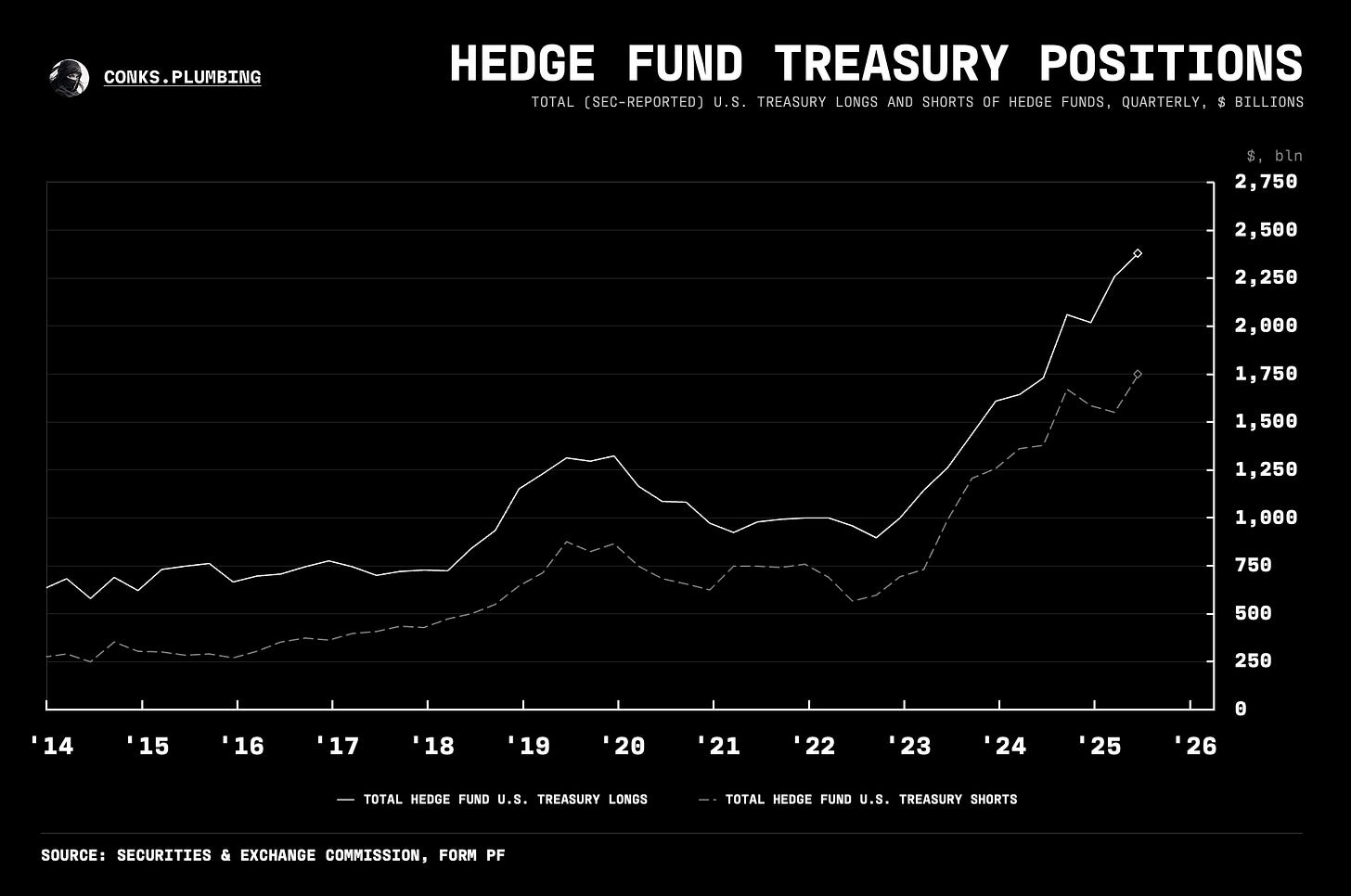

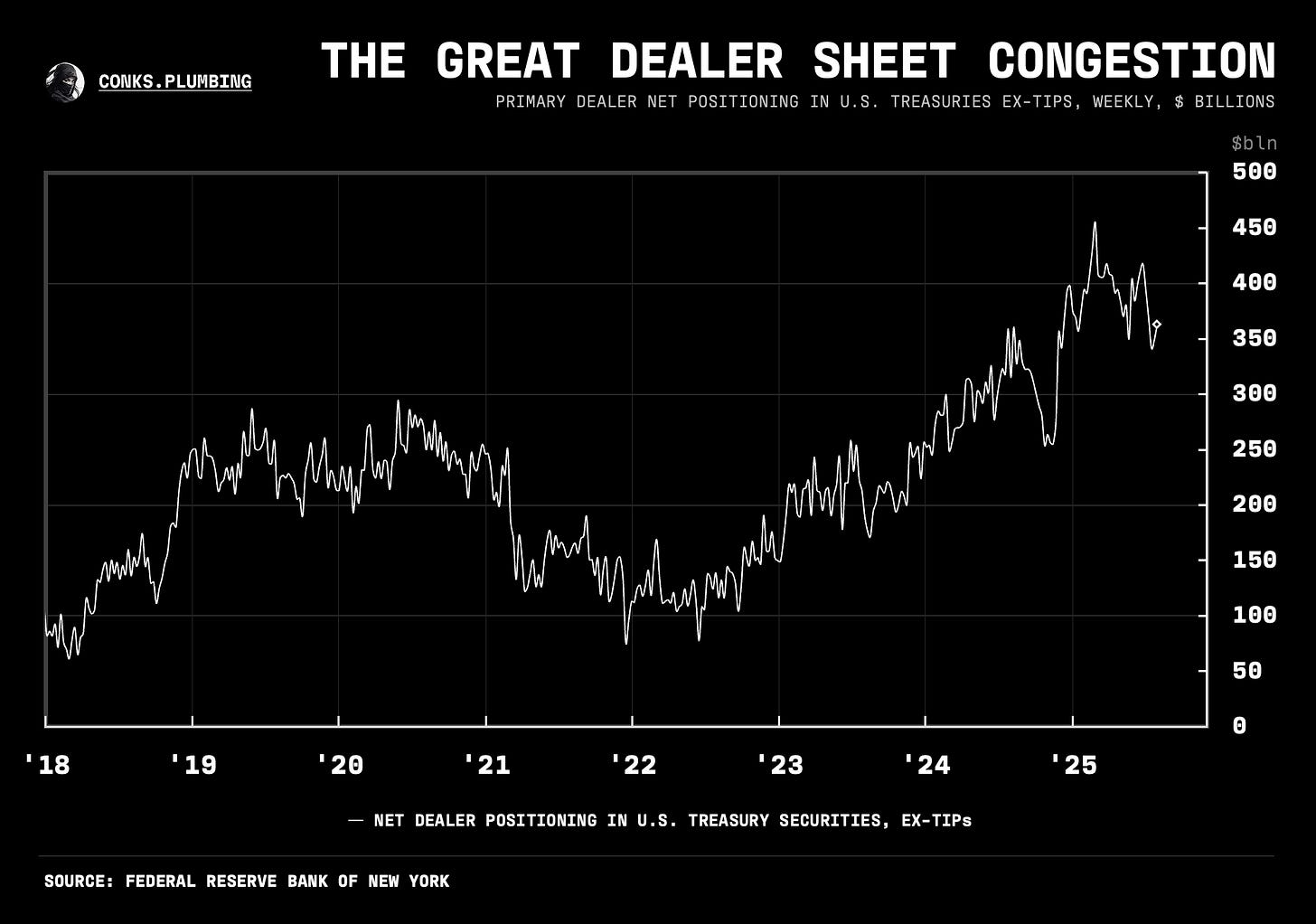
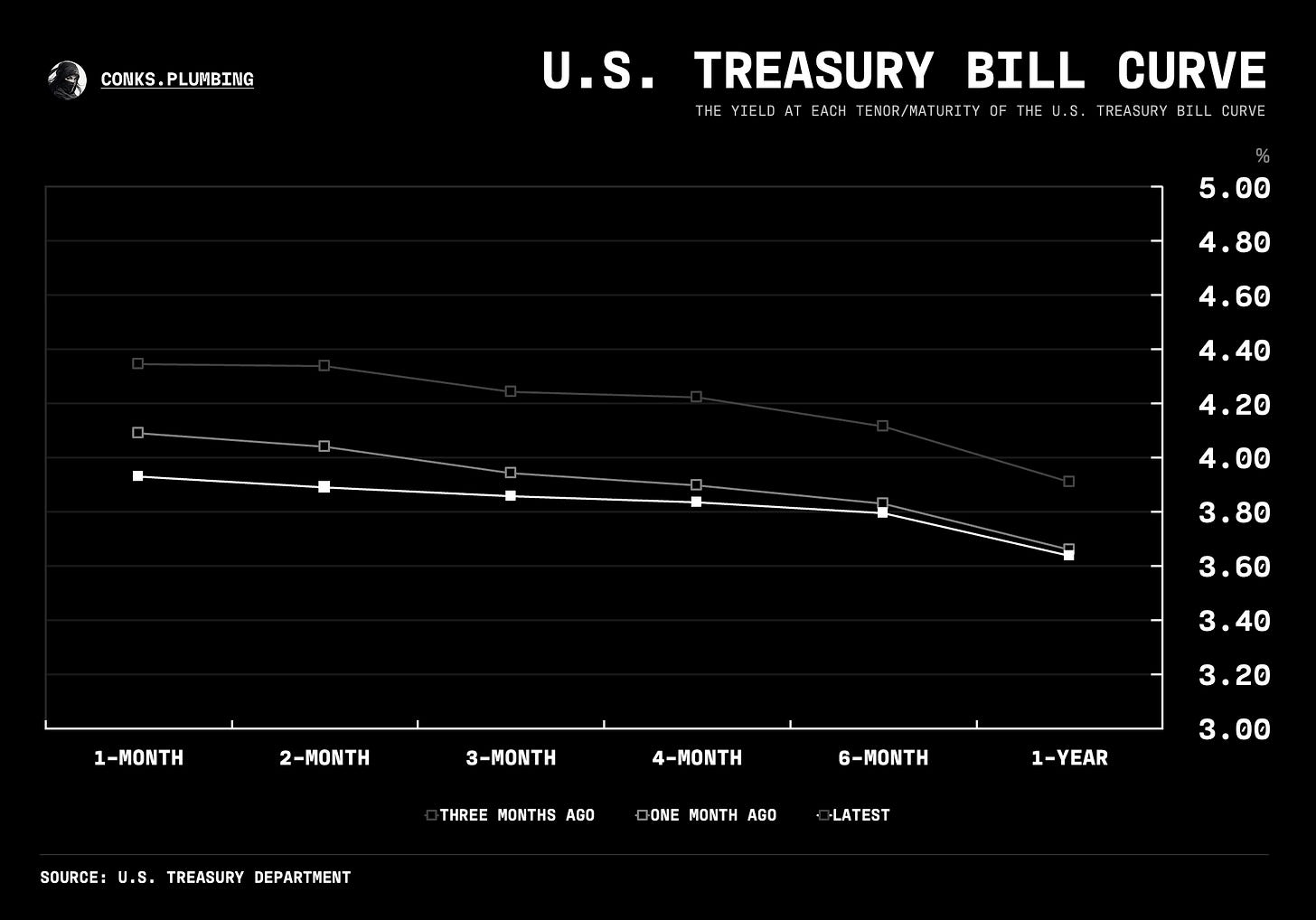
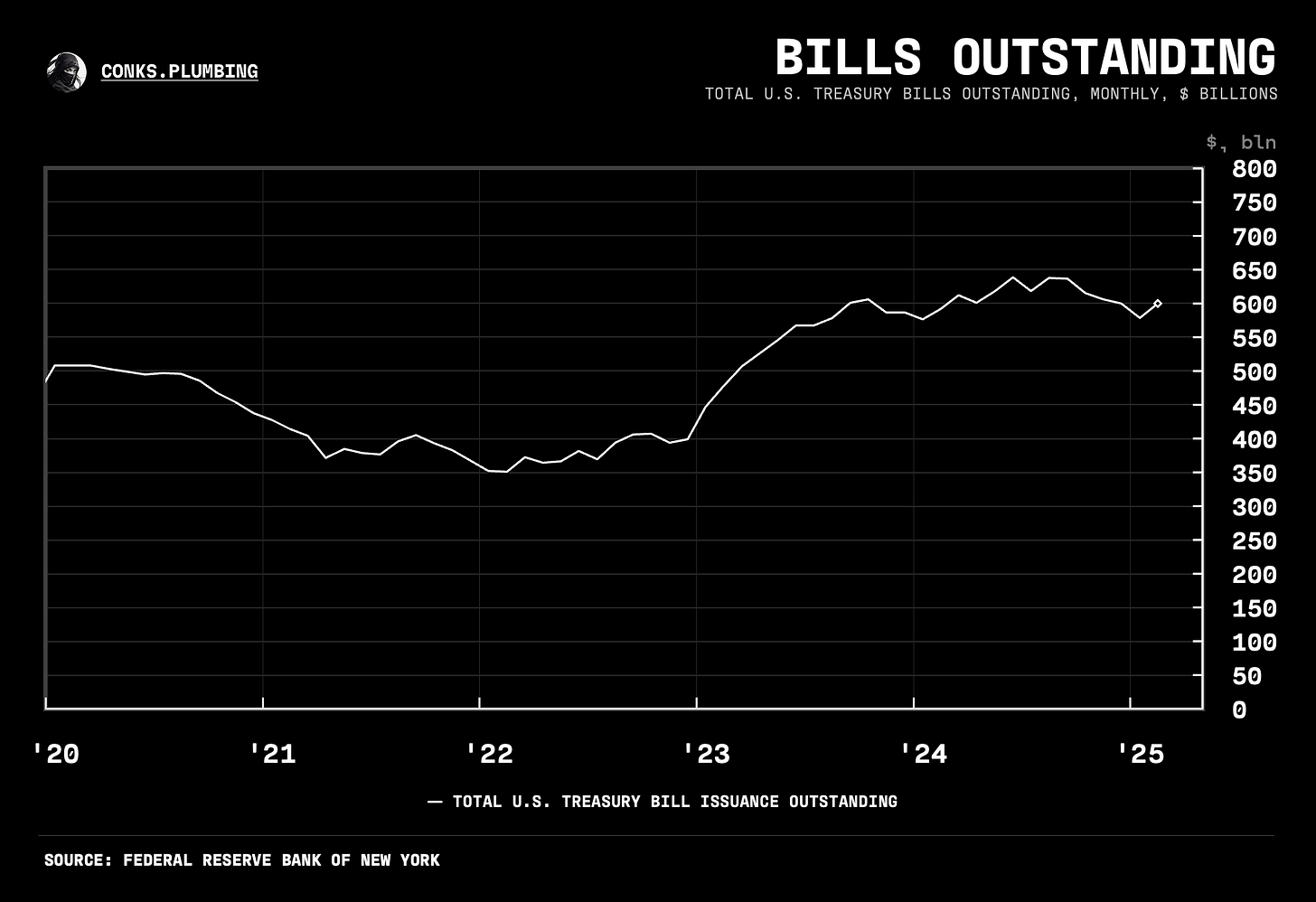

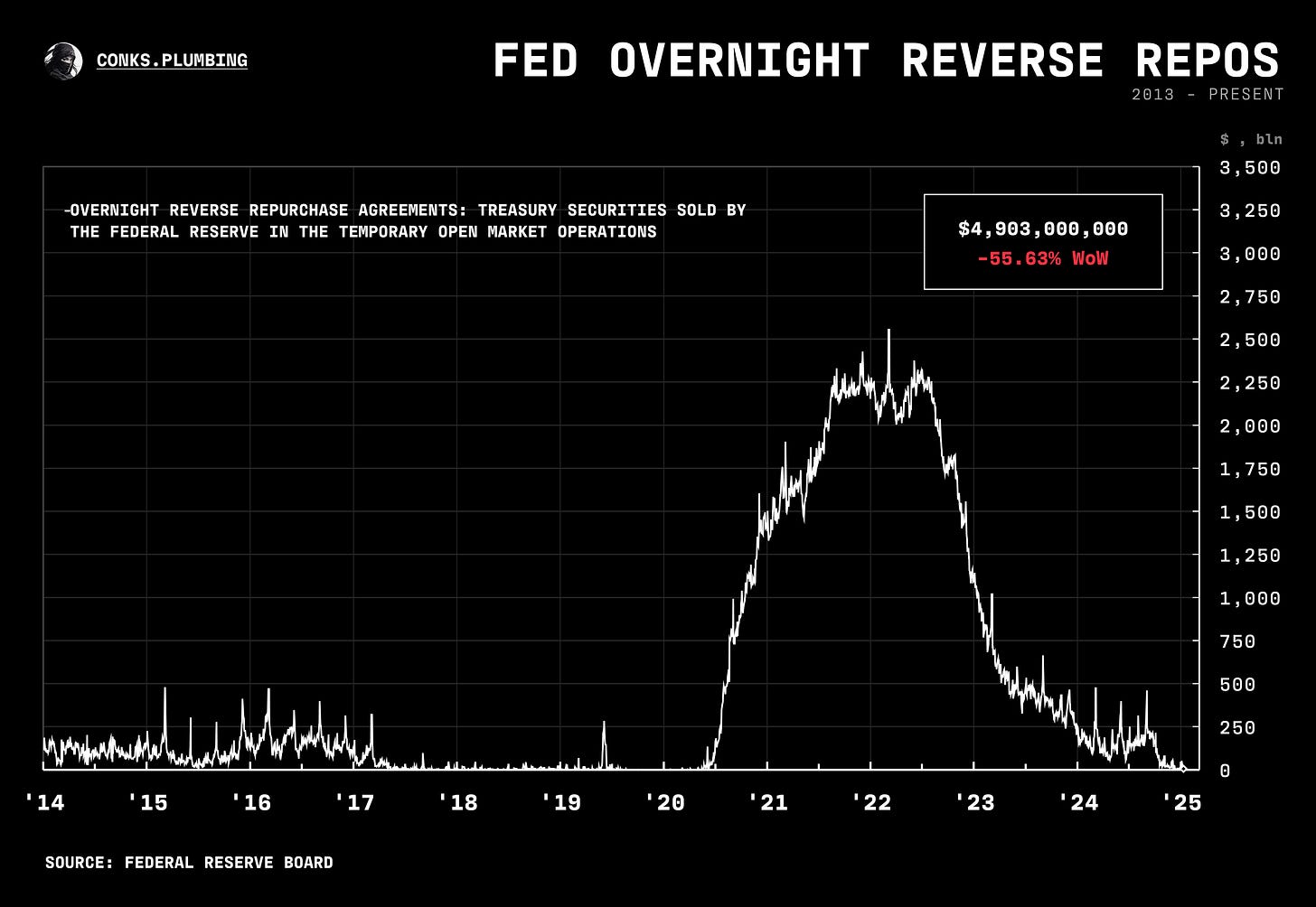
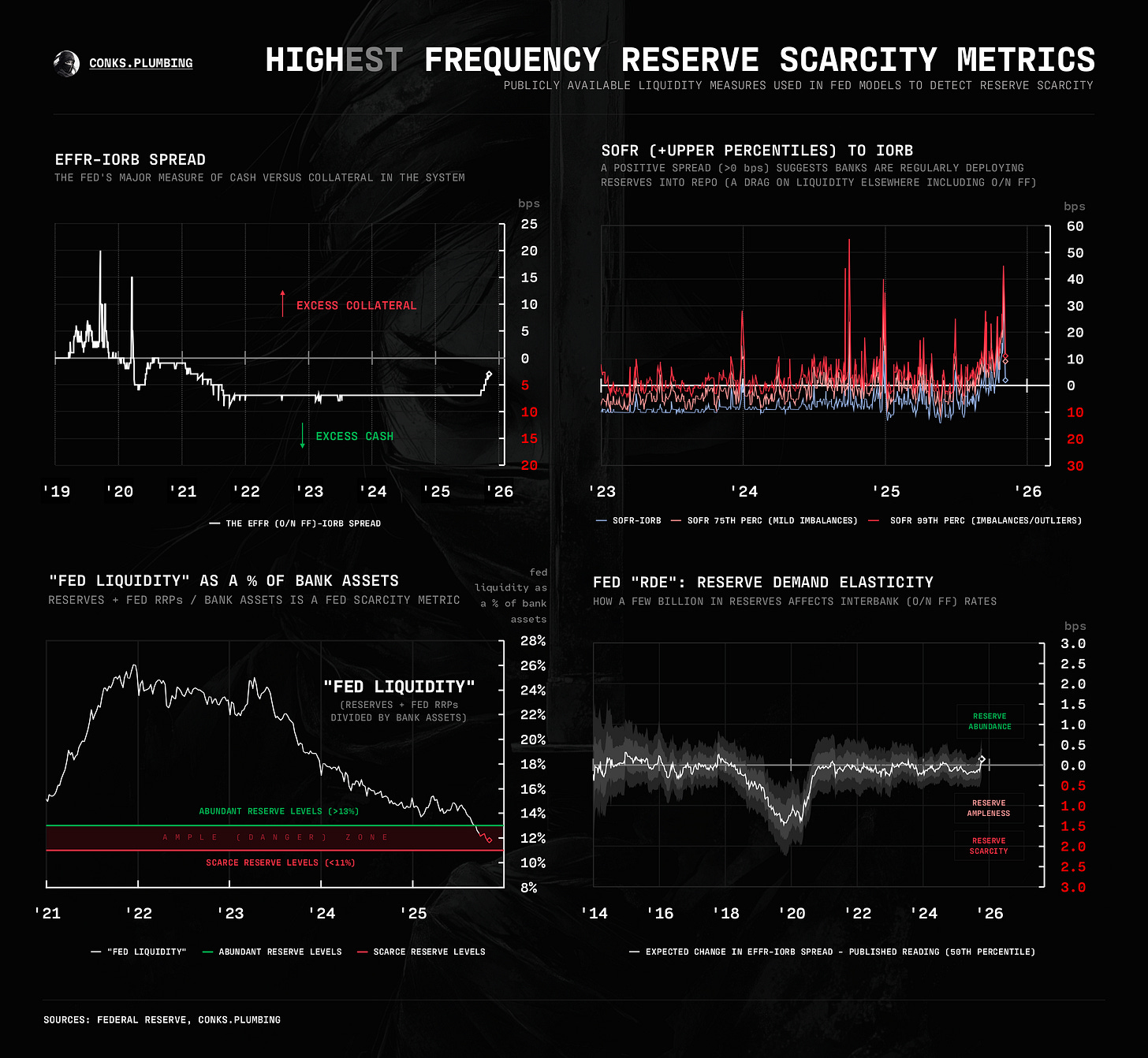

Nice work. Am I reading this correctly that you are predicting 2026 bank reserve increases of 240-360BN? Which is 8-12% annual pace?
Or is that the amount of TBILLs purchased and that will serve to offset some unknown pace of reserve depletion due to CIC expansion while adding to the annual reserve growth provided by IORB?
Can you break down your prediction of 20-30BN monthly?
I see CIC related reserves drain of 5.5% annual pace
IORB related reserve expansion at 3.5% annual pace
Resulting in 2% net drain if doing nothing.
Do you agree?
2% drain is a need to buy bills at 4.6BN monthly for standstill
Assuming reserves need to grow with the economy and GDP growth assumption is 4% I see a need for 6% per annum growth given above 2% net drain. Yet you are projecting 8-12%. Why is that?
I certainly like the new format woth short term comment!
When I look at the WAM chart - seems like all the talk on ATI and treasury WAM is... kinda overhyped?
Which brings me to a question - do you think there is any plausibility to the theory of the "Global Liquidity" man? It always seemed like astrology to me. But in his recent big interview with Jack he finally said that what he calls "liquidity" is actually duration and I guess it makes a bit of sense, i.e. refinancing 1Y corporate bond into 5-7Y bond with higher rate might matter?